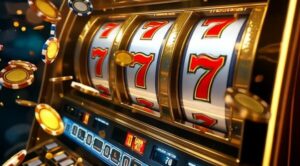Key Moments:
- Slovak opposition lawmakers have criticized recent reductions in the flat-rate levy on gambling devices, claiming a loss of approximately €52 million annually for the state budget
- Calls have been made to shift Slovakia’s tax regime closer to Austria and Poland, where GGR taxes stand at 30% and 50% respectively
- Opposition states that gambling expenditures reached €1.5 billion last year, with staking quadrupling in recent years
Political Backlash Against Gambling Tax Cuts
In Slovakia, members of the opposition are demanding stricter taxation on land-based gambling following the government’s decision to decrease the flat-rate levy per gambling device. Lawmakers from the Slovakia Movement, including Michal Šipoš and Július Jakab, have raised concerns that the policy revision gives undue advantage to major gambling operators, diminishes state revenues, and does little to address gambling-related issues.
The government’s original tax proposal set a flat-rate levy of €9,300 per device or table, but this amount has since been reduced by between 40% and 60%. Šipoš estimates the policy change results in an annual loss of around €52 million for the state, describing the move as a “tax bonus” for large gambling firms.
Advocating for Robust Tax Structures
Šipoš maintains that reversing the levy reductions and adopting steeper taxes would aid in increasing public funds and curbing problem gambling. He argues that the lowered rates disproportionately benefit large corporations, leaving Slovak citizens vulnerable, and that a more rigorous tax regime would encourage greater industry responsibility.
The opposition advocates for Slovakia to align its gambling taxes with models found in other European states. Šipoš highlights Austria and Poland as reference points, proposing that Slovakia could potentially generate up to €300 million annually by following their approaches. Currently, Poland imposes a 50% tax on gross gaming revenue (GGR), while Austria’s rate is 30% GGR.
Existing Slovak Gambling Tax Structure
| Device Type | Flat-Rate Levy | Additional GGR Tax |
|---|---|---|
| Player-operated devices | €4,700 | 27% |
| Slot machines in gaming halls | €4,400 | 27% |
| Video terminals in venues | €6,000 | 27% |
Slovakia presently employs a mixed tax model that combines a flat-rate device levy with a 27% tax on gross gaming revenue. The approved device levies vary, with rates of €4,700 for player-operated machines, €4,400 for each gaming hall slot, and €6,000 for video terminals located in physical establishments.
Concerns Over Gambling Expansion
According to opposition representatives, Slovakia’s current tax structure is insufficient given the recent surge in gambling activity. Július Jakab notes that the average spend on gambling has increased fourfold over recent years, and total player losses reached €1.5 billion last year. Jakab also said:
“These are profits made on human misery, and the government refuses to tax them properly.”
The Slovakia Movement remains committed to pursuing higher taxes and tighter regulation of land-based gambling, contending that increased rates are essential to support the state budget and mitigate the societal impacts of gambling.
- Author


